University of Washington Human Resources
UNIVERSITY OF WASHINGTON
Specification for Class
APL RESEARCH SCIENTIST/ENGINEER 4
UW CODE AND REPRESENTATIVE GROUP
23560 (NE S UAW RSE) 23559 (E S UAW RSE)
CLASS SERIES CONCEPT
Within the Applied Physics Laboratory (APL), apply scientific knowledge gained through formal education at least at the Bachelor's level or equivalent/related experience to conduct research in one or more of the following core technical competencies APL is required to maintain as a United States Navy University Affiliated Research Center (UARC): experimental oceanography, acoustic propagation in the ocean, underwater instrumentation and equipment, simulations and signal processing, acoustic and related systems, marine corrosion, mission related and public service quick response research, development, and/or engineering.
Responsibility for, assisting or contributing in one or more of the following tasks: Identifying and defining research problems; Designing approaches or hypotheses to be tested and the methodology to be used; Designing specific phases of research projects; Analyzing results; Developing conclusions and hypotheses; Presenting research results in publishable form; Developing and obtaining research grants.
BASIC FUNCTION
This is the fully competent professional researcher, independent researcher level. Plans and executes laboratory research. Capable of working independently and without direction on assigned tasks/projects. Plans and conducts work requiring independent judgment in the evaluation, selection, and substantial adaptation/modification of standard techniques, procedures and criteria. Devises new approaches to problems encountered. Uses a wide application of complex principles, theories and concepts in the specific field. Works on complex problems of diverse scope where analysis of data requires in-depth evaluation of identifiable factors. Project results may impact UW research mission; results are visible/impactful in peer community.
DISTINGUISHING CHARACTERISTICS
Independently performs most assignments with instructions as to the general results expected. Receives technical guidance on unusual or complex problems and supervisory approval on proposed plans for projects. Has established technical expertise; serves as a resource to research unit/department and UW. Possesses and applies a comprehensive knowledge of particular field of specialization to the completion of complex assignments; advances state-of-the-art research in field of specialization.
TYPICAL WORK
Manages multiple or significant projects which may require the use of sophisticated project planning techniques.
Plans, schedules, conducts, or coordinates detailed phases of the work of a major project or in a total project of moderate scope.
Makes substantial contributions to determining feasibility of goals/objectives; may evaluate proposed or ongoing projects; interfaces with client/customer project managers and UW research/engineering management for existing or proposed projects.
Creates opportunities to enhance technical methodology or content through expansion of existing, or development of, new efforts; may extend technology into new application areas; contributes or leads in major intellectual development activities.
Chairs sessions at technical meetings; gives invited papers; participates in external seminars, workshops, professional societies and committees.
Provides innovative problem-solving approaches to enhance organizational capabilities; uses peer network to expand technical capabilities and identify new research opportunities.
Understands broad strategic objectives and contributes to them; nurtures and maintains relationships with major customers/grantors of external research and development grant funding.
Identifies grant/project extensions and persuade customers/grantors to fund; impacts customer decisions and strategies.
Identifies and evaluates candidates for open positions; mentors/trains staff or students in development of technical, project and business development skills.
May develop research tools.
May lead others on assigned work, provide major input to staffing of overall project teams, build teams and staff to optimize efficiency and cost effectiveness.
May initiate new project concepts and seek funding, develop technical proposals and make presentations to potential customers/grant sponsors.
Perform other duties as assigned.
MINIMUM QUALIFICATIONS
Master's degree in a related field and four years of relevant experience,
Equivalent combination of education/experience.
ADDITIONAL REQUIREMENTS
There may be instances where an individual position requires additional security clearance and/or U.S. citizenship. It is the employer’s responsibility to ensure the appropriate security clearance/U.S. citizenship is obtained for each position.
CIVIL SERVICE EXEMPTION
CLASSIFICATION HISTORY
New to UAW: 06-16-2022 per PERC Case No. 134711-E-21. Prior to 06-16-2022, this work was in professional staff job codes 19328 - Research Scientist/Engineer 4 (NE S 9) and 11495 - Research Scientist/Engineer 4 (E S 9).


How to Become a Research Scientist

Industry Advice Science & Mathematics
Professionals with a background in biotechnology can choose to pursue many lucrative careers . One of the most common choices is to become a research scientist. These individuals work in drug and process development, consistently conducting research and performing experiments to help move the biotechnology industry forward.
“At the highest level, a research scientist is somebody who can design and execute experiments to prove or disprove a hypothesis,” says Jared Auclair , director of the biotechnology and bioinformatics programs at Northeastern. “Within the world of biotechnology, that can mean a number of different things, from creating new drugs to improving the process of how we make a drug.”
Professionals in this industry are often drawn to the wide array of applications of this work, as well as the consistently positive career outlook. The average salary of a biotechnology research scientist is $85,907 per year, with plenty of opportunities for increased salary potential depending on specializations, location, and years of experience.
These factors—alongside the growing demand for advancement in biotechnology over the last few decades—have led many aspiring biotechnologists to consider a career in research science. Below we offer five steps professionals can take to kick-start a career in this field.
Download Our Free Guide to Advancing Your Biotechnology Career
Learn how to transform your career in an industry that’s transforming the world.
DOWNLOAD NOW
5 Steps to Become a Research Scientist
1. acquire the necessary technical skills..
According to Auclair, there are four main applications of research science within the biotechnology field:
- Molecular Biology
- Process Science
- Biochemistry
- Analytical Biotechnology
Professionals hoping to pursue a career in research science must begin by deciding which of these four areas is the best fit for their interests and backgrounds. They must then acquire the specific skill sets they need to excel in that area.
Below, Auclair breaks down some of the key skills and knowledge required within each of these specializations:
- Molecular biologists should focus on developing a complex understanding of DNA and learn how to do a Polymerase Chain Reaction alongside other DNA-related experiments.
- Process scientists must understand cell biology and how to work with living mammalian cells, as well as how to perform analytical experiments using mass spectrometry and other analytical tools.
- Biochemists should focus on obtaining the skills necessary to make a protein drug, including the expression and purification of proteins.
- Analytical biotechnicians must become comfortable with techniques like mass spectrometry—a process that uncovers what drug products are at a molecular level.
One efficient way aspiring research scientists can obtain these specific skill sets is to pursue a master’s degree in biotechnology at a top university like Northeastern.
“The biotech program is designed in collaboration with industry so that we’re meeting their needs,” Auclair says. “This includes training students with the skills they need to be a successful research scientist.”
The curriculum of Northeastern’s program explores the core competencies required to excel in the general biotechnology field and provides students with the unique subsets of skills they need to specialize in a specific area of research science. Students can even declare one of 10 industry-aligned concentrations, including options that directly relate with these common research science roles.
“Especially in industry, most people who are doing research science—who are actually doing the experiments and helping think about experiments with some of the senior leaders in the company—are people with a master’s degree,” Auclair says.
2. Become a critical thinker.
Alongside honing technical skills, Auclair says that critical thinking abilities are key for aspiring research scientists.
“It’s important to become a critical thinker and a problem solver, and to challenge yourself wherever you can to step outside of your comfort zone,” Auclair says.
Though critical thinking is a common requirement among most professional career paths, it is especially important for research scientists, who are constantly tasked with innovating and thinking creatively to solve problems.
Northeastern’s master’s in biotechnology program is designed to help students grow in this regard. “Everything we do within the program is geared [toward] making you a critical thinker and a problem solver,” Auclair says. “We try to define classes and assessments to make you think, [and] we also hire most of the faculty in our program directly from the industry, so they bring with them real-world experience that they can talk about with the students.”
These real-world case studies are a core component of Northeastern’s approach to learning, and they help prepare students to think critically about their work. By bringing this exposure into the classroom, students also graduate better prepared to tackle current industry challenges and adapt to evolving trends .
3. Hone your “power skills.”
It’s no longer enough for research scientists in biotechnology to have obtained the technical skills needed to complete their work. Today, many employers require an array of industry-specific “power skills”—previously known as “soft skills”—among candidates for research science roles.
Below we explore the top three “power skills” for biotechnology research scientists:
- Communication: As a research scientist, “you must be able to communicate scientific information to both technical and non-technical people,” Auclair says. For this reason, professionals should work to hone their verbal and written communication styles, focusing specifically on the variances in each depending on which audience they’re interacting with.
- Presentation Ability: Research scientists must be able to present their findings clearly and concisely to a variety of different audiences, ranging from fellow scientists to investors to C-suite executives. Research scientists must be comfortable in front of a group and know how to speak about their experiments and conclusions in an engaging and informative way.
- Teamwork: Although one might think a research scientist’s work is very siloed, today’s professionals must be very comfortable working with others in a lab environment. They must become comfortable sharing ideas, providing feedback to others in their cohort, and tweaking their experiments based on contributed findings.
Northeastern offers students the chance to explore each of these core “power skills” during their time within the master’s in biotechnology program. For example, the university offers countless opportunities for students to collaborate with and present to classmates, instructors, and even industry-leading organizations through Northeastern’s experiential learning opportunities, giving them the chance to apply these skills in both classroom and real-world situations early on.
Learn More: How to Become a Biotechnologist: Build Your Soft Skills
4. Obtain hands-on experience.
One of the most effective ways an aspiring research scientist can prepare for a career in this field is to obtain experiences working in a real lab. While finding these kinds of opportunities can be difficult for those just breaking into the field, programs like Northeastern’s MS in biotechnology bake hands-on learning directly into the curriculum.
“Students do essentially four to six months [working in the] industry, and put what they learn in the classroom…into practice,” Auclair says.
These opportunities, known as co-ops , provide students with the chance to work within top organizations in the industry and explore the real-world challenges of the field from inside a functioning lab.
Did You Know: Northeastern’s program provides students with exposure to the tools and equipment used within labs in the industry. This access to cutting-edge technology reduces the learning curve and allows students to dive into their work as soon as they graduate.
Another unique way Northeastern provides hands-on experience is through Experiential Network (XN) Projects . Students who participate in these projects are typically paired with a sponsor from an active biotech company that has a real-world problem they need to solve. Then, “under the guidance of a faculty member, students spend the semester trying to come up with solutions to that problem,” Auclair says. “It’s all student-driven.”
Hands-on learning opportunities like these give students a competitive advantage when it comes to applying for jobs. “The experiential learning piece [of our program] is what has our students actually stand out above others in the field,” Auclair says, because employers like to see that their candidates are capable of applying their skills in a real-world environment.
5. Grow your network.
Research shows that 85 percent of all jobs today are filled through networking, making it more important than ever for professionals across industries to invest time and energy into building these vital relationships.
Professionals hoping to establish a career as a research scientist are no exception. These individuals should aim to develop connections with organizations and individuals within the greater biotech industry early on in their careers, and use those relationships to help carve their path forward.
Northeastern’s master’s in biotechnology program has strategically created many great opportunities for students to network throughout their time in the program. They are encouraged to build relationships with their classmates, guest speakers, faculty, and even the industry leaders they meet through co-ops and XN projects. As a result, they establish various impactful connections with individuals at different stages in their careers, all before they graduate.
Learn More: Networking Tips for Scientists
Another way Northeastern’s program supports networking is through opportunities for student/faculty collaboration. “We encourage our students to interact with our own faculty who are research scientists as much as possible, whether that’s volunteering in their lab or finding a half an hour to talk to them about what they’re doing,” Auclair says. “We want our students to be exposed to as many research scientists as possible while they’re in the program.”
Take the Next Step
Pursuing a master’s degree in biotechnology from a top university like Northeastern is a great way for aspiring research scientists to break into the field. Students in these programs can hone related skill sets, grow their professional networks, and experience hands-on learning, all while pursuing graduate-level education.
Learn more about how a master’s in biotechnology can set you up for success as a research scientist on our program page , then get in touch with our enrollment coaches who can help you take the first step.

Subscribe below to receive future content from the Graduate Programs Blog.
About shayna joubert, related articles.

Compliance Specialists: Who They Are and What They Earn
Science or science fiction the future of personalized medicine.

In-Demand Biotechnology Careers Shaping Our Future
Did you know.
The average U.S. bioscience worker earned nearly $99,000 in 2016, 85% greater than the average for the overall private sector. (BIO, 2018)
Master of Science in Biotechnology
An innovative degree for a dynamic industry.
Most Popular:
Tips for taking online classes: 8 strategies for success, public health careers: what can you do with an mph, 7 international business careers that are in high demand, edd vs. phd in education: what’s the difference, 7 must-have skills for data analysts, the benefits of online learning: 8 advantages of online degrees, how to write a statement of purpose for graduate school, the best of our graduate blog—right to your inbox.
Stay up to date on our latest posts and university events. Plus receive relevant career tips and grad school advice.
By providing us with your email, you agree to the terms of our Privacy Policy and Terms of Service.
Keep Reading:

The 8 Highest-Paying Master’s Degrees in 2024

Graduate School Application Tips & Advice

How To Get a Job in Emergency Management

Join Us at Northeastern’s Virtual Graduate Open House | March 5–7, 2024
ASU student team’s design selected as finalist for 2024 NASA-sponsored BIG Idea Challenge
Luminosity lab student team created an inflatable, reusable lunar landing pad system that could help future artemis missions.
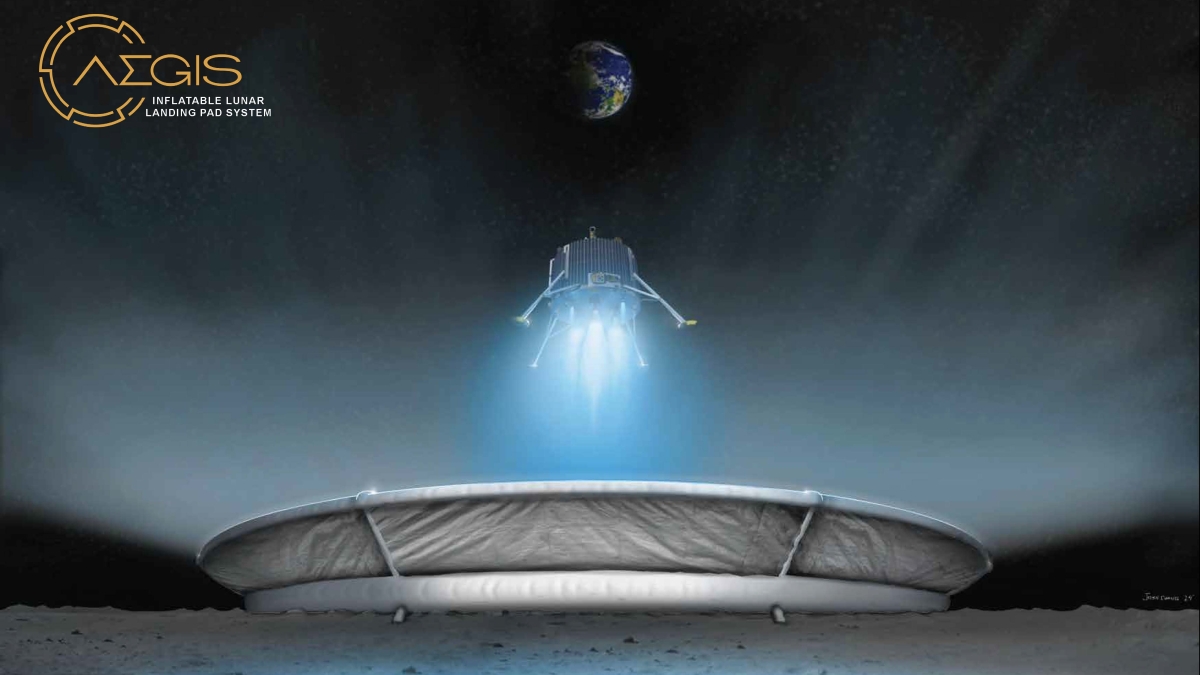
An artistic rendering of the student-designed AEGIS inflatable lunar landing system, which is capable of autonomously deploying to reduce dust and debris generated by landers. Image courtesy Luminosity Lab/ASU
Arizona State University’s Luminosity Lab student team was recently selected as a finalist in NASA’s Breakthrough, Innovative, and Game-Changing (BIG) Idea Challenge . The group is one of six teams selected by NASA to present at the 2024 BIG Idea Challenge Forum, Nov. 5–7, at NASA Langley Research Center in Hampton, Virginia.
The theme for the 2024 NASA-sponsored engineering competition, “Inflatable Systems for Lunar Operations,” challenges student teams to research, design and demonstrate novel inflatable systems configured for future lunar operations that could help future Artemis missions and beyond.
The Luminosity Lab’s student group designed an inflatable and reusable lunar landing pad system, Aegis, which is capable of autonomously deploying to reduce dust and debris generated by landers; the system will also provide precision landing assistance to enable a safe landing. Being chosen as finalists means students will spend the next several months designing, building and testing their ideas, supported by as much as $150,000 from NASA.
“We have a phenomenal team of students working on this project, and I’m really proud of what they have accomplished by winning this proposal,” said Tyler Smith , senior director at ASU’s Luminosity Lab. “The inflatable landing pad system they designed is both innovative and solves a real issue for landers on the lunar surface.”
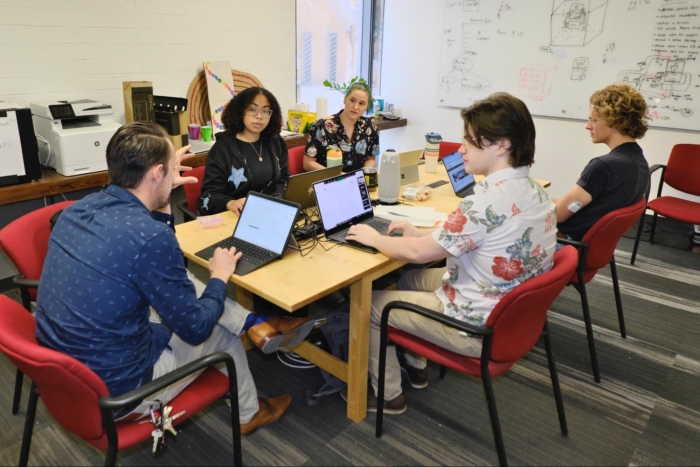
Presenting at the finals this fall provides students the opportunity to work with experts from NASA and the commercial space industry, and to receive guidance from faculty advisors from ASU’s School of Earth and Space Exploration (SESE) and Space Technology and Science ("NewSpace") Initiative , such as Professor Jim Bell and Jim Rice , assistant research scientist, both of whom have been actively involved with several NASA solar system exploration missions.
"The team at Luminosity Lab has done a fantastic job pitching an elegant solution to NASA's call for innovative inflatable technologies on the moon,” said Bell. “A number of us in SESE and ASU/NewSpace are eager to work with these talented students to help them mature their design and test/prototype it first here in Arizona and then later this year at NASA."
The BIG Idea Challenge is an initiative supporting NASA’s Space Technology Mission Directorate’s Game Changing Development program’s efforts to rapidly mature innovative and high-impact capabilities and technologies for infusion in a broad array of future NASA missions. This engineering design competition seeks innovative ideas from the higher education academic community for new topics each year relevant to current NASA Space Technology priorities.
NASA’s Space Technology Mission Directorate sponsors the BIG Idea Challenge through a unique collaboration between its Game Changing Development program and the agency’s Office of STEM Engagement. It is managed by a partnership between the National Institute of Aerospace and the Johns Hopkins Applied Physics Laboratory.
More Science and technology
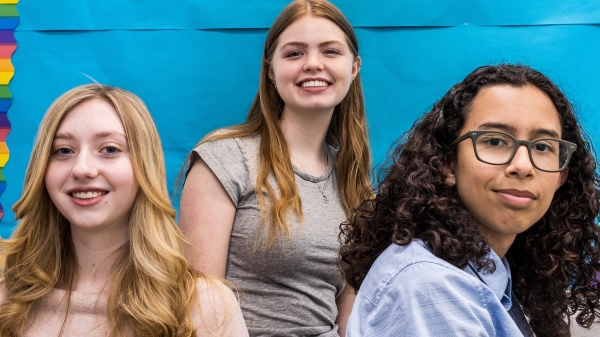
4 Herberger Young Scholars Academy students win prestigious Cambridge awards
Michael Twilling, the executive director of the Gary K. Herberger Young Scholars Academy on Arizona State University’s West Valley campus, likes to say the school “opens doors” for its students. “…

Machines use AI to test new materials so we don’t have to
We are living in a material world. In the face of an intense period of global evolution, including climate change, aging populations and an increased need to conserve resources such as food and…

3 ASU students win first place in poster contest at world's largest general science conference
Three Arizona State University students have won first place in their respective categories in the annual poster competition hosted at the American Association for the Advancement of Science (AAAS)…
Hurricanes are getting so intense, scientists propose a Category 6

When meteorologists began using the five-step Saffir-Simpson scale to measure hurricane intensity in the 1970s, a Category 5 storm represented oblivion. Such a cyclone, with sustained winds of at least 157 mph, could flatten any structure of the era, so there was no reason to give the most ferocious tier of hurricanes an upper bound.
But as the planet warms, storms are increasingly surpassing what was once considered extreme, according to research published Monday . Now, two scientists are proposing a new label they say a growing number of storms already merit: Category 6.
“Climate change has demonstrably made the strongest storms stronger,” said Michael Wehner, a senior scientist at the Lawrence Berkeley National Laboratory. “Introduction of this hypothetical Category 6 would raise awareness of that.”
Wehner and James Kossin, a distinguished science adviser at the First Street Foundation, suggest the Category 6 label could go to any tropical cyclone with sustained winds of at least 192 mph — an intensity that five storms have surpassed since 2013.
Meteorologists have for years debated whether the current hurricane scale adequately captures the hazards of today’s storms — it only takes winds into account, not pounding waves or flooding — and whether a new top-end category is needed. With the new research, the scientists say they are formalizing that discussion, in hopes of spurring more academic debate about the ways climate change is heightening weather hazards as we know them.
“Having [Category 5] mean anything above a certain threshold is becoming more and more problematic,” Kossin said. “It tends to understate the risk.”
There is no sign that government hurricane forecasters will revise their rating scale anytime soon — and some meteorologists disagree on whether it should be adopted. Still, the proposal underscores how dramatically the potential for extreme storms has surged.
As global temperatures rise, oceanic and atmospheric warming are more often creating a prime environment for storms to rapidly strengthen and swirl more forcefully than ever.
The scientists predict the trend will only accelerate in warm basins such as the Gulf of Mexico, where some sea surface temperature readings surpassed 100 degrees amid record global warmth last summer. Scientists forecast the threat will worsen once planetary temperatures average 2 degrees Celsius (3.6 degrees Fahrenheit) above preindustrial levels. In that scenario, they say the risk of Category 6 storms in the Gulf will double.
Climate change is intensifying hurricanes
The research adds to a growing body of understanding — and proof — that global warming translates to stronger storms.
After all, warmer air holds more moisture. And more heat means more energy for storms to feed on and violently unleash. Tropical cyclones effectively serve to even out clashes between high and low pressure and hot and cool temperatures, returning the meteorological environment to equilibrium .
Global warming has already translated to increasing odds of major hurricanes around the world , according to research Kossin led that was published in the Proceedings of the National Academy of Sciences in 2020. Other studies have found that as temperatures rise, more hurricanes are undergoing what meteorologists call rapid intensification , and they are doing so at accelerating rates.
Kossin and Wehner’s latest paper adds more detail and scientific rigor to our understanding of what climate change means for the most intense hurricanes.
They scrutinized observations of past storms to find that five stand as outliers relative to past Category 5 storms: Typhoon Haiyan in 2013, Hurricane Patricia in 2015, Typhoon Meranti in 2016, Typhoon Goni in 2020 and Typhoon Surigae in 2021.
Haiyan killed thousands across the Philippines, stunning meteorologists with its record intensity. Two years later, Patricia became even stronger, with maximum sustained winds of 215 mph, though it weakened before making landfall in Mexico.
They analyzed how often conditions could be ripe for such extreme storms to develop. They found that near the Philippines, risks of a Category 6 storm would rise by 50 percent once global warming reaches 2 degrees Celsius above preindustrial levels and would double at 4 degrees of warming. In the Gulf, the risks would triple if warming reaches 4 degrees above preindustrial levels.
And they used climate models to forecast how often Category 6 storms might form in the future and to be sure the trend is tied to climate change and not natural variability. They found that annual chances of a Category 6 forming somewhere on the planet would climb to 2 percent at 1.5 degrees of global warming, 7 percent at 2 degrees of warming and 10 percent at 3 degrees of warming.
Some worry a new category could backfire
Though there might be a scientific basis for the idea of a Category 6 storm, not all meteorologists will support adopting it. After all, a Category 5 storm causes “catastrophic” damage that could make an area “uninhabitable for weeks or months,” according to the National Hurricane Center’s description.
“It’s hard for me to envision the need to convey a threat beyond this, even if a hypothetical tropical cyclone had peak winds that would constitute a category 6 (however one defines this),” Michael Fischer, an assistant scientist at NOAA’s Atlantic Oceanographic and Meteorological Lab, said in an email.
And there is a risk that the Category 6 designation could backfire, he added.
“If a category 6 were established, would that diminish the threat of a category 5 storm, since that is no longer the most severe rating?” Fischer added.
Even without introduction of a Category 6, the Saffir-Simpson scale already faces criticism for only considering wind speeds and not dangers from storm surge, flooding or tornadoes. To qualify as hurricanes, tropical cyclones must have sustained winds of at least 74 mph; “major” hurricanes have winds of at least 111 mph.
The National Hurricane Center will soon test a new version of its widely used forecast cone that is intended to communicate that a storm’s wind hazards extend far from the spot at which its eye is predicted to make landfall.
But National Oceanic and Atmospheric Administration research shows such water-related hazards are hurricanes’ deadliest threats, said Deirdre Byrne, a NOAA oceanographer who studies ocean heat and its role in hurricane intensification. While adding a Category 6 “doesn’t seem inappropriate,” she said, combining the Saffir-Simpson scale with something like an A through E rating for inundation threats might have a greater impact.
“That might save even more lives,” Byrne said.
In a statement, National Hurricane Center Director Michael Brennan seconded those concerns. He said NOAA forecasters have “tried to steer the focus toward the individual hazards,” including storm surge, flooding rains and dangerous rip currents, rather than overemphasizing the storm category, and, by extension, the wind threats alone.
“It’s not clear that there would be a need for another category even if storms were to get stronger,” he said.
Bringing the Saffir-Simpson scale into the future
Kossin and Wehner said their research doesn’t mean to suggest that Category 6 should be added to the Saffir-Simpson scale. That is a decision that would require social science research into how it might affect people’s risk perceptions and their actions to prepare for tropical cyclones, they said.
Instead, they said their intention is to convey just how dramatically global warming has changed the environment for hurricanes. The scientists said they hope the discussion raises urgency to better equip coastal communities for new and changing weather extremes.
Wehner compared it to when Australians had to add a new color to heat maps amid unprecedented heat waves, or when, just last month, extreme ocean temperatures prompted NOAA to add three categories to a coral bleaching alert system .
“The ways we considered things in the past are not necessarily good describers of the present, and certainly the future,” he said.
- Scientists fear planetary shift as record ocean heat enters second year March 20, 2024 Scientists fear planetary shift as record ocean heat enters second year March 20, 2024
- Why experts think tornado season could soon spring to life March 19, 2024 Why experts think tornado season could soon spring to life March 19, 2024
- You’re not crazy. Spring is getting earlier. Find out how it’s changed in your town. March 13, 2024 You’re not crazy. Spring is getting earlier. Find out how it’s changed in your town. March 13, 2024


Suggested Searches
Climate Change
- Expedition 64
- Mars perseverance
- SpaceX Crew-2
- International Space Station
- View All Topics A-Z
Humans in Space
Earth & Climate
The solar system, the universe, aeronautics, learning resources, news & events.
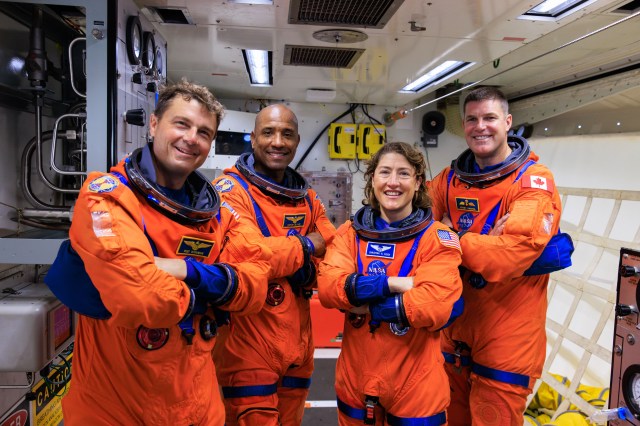
Find Your Place In Space Week
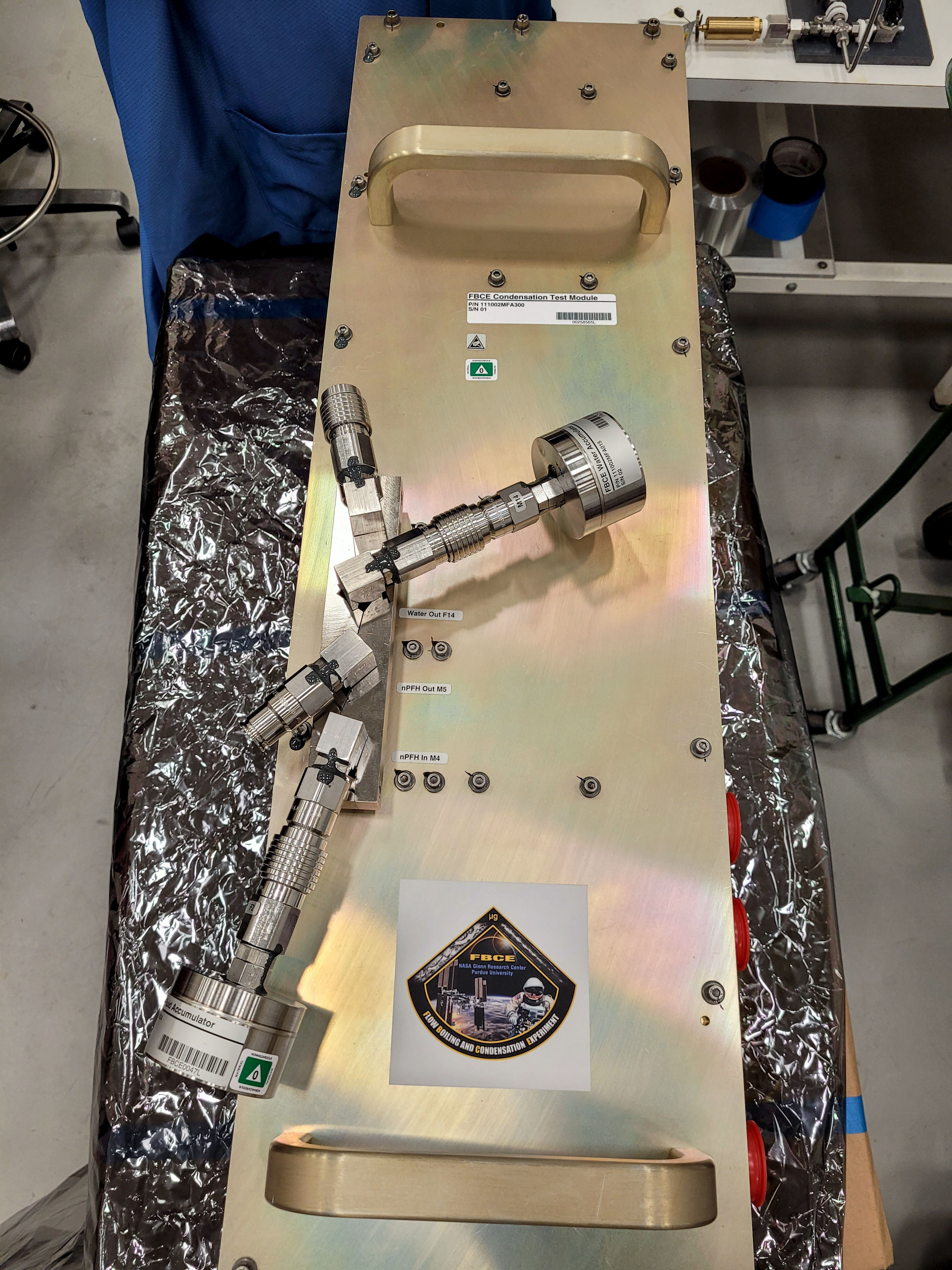
International Space Station welcomes biological and physical science experiments
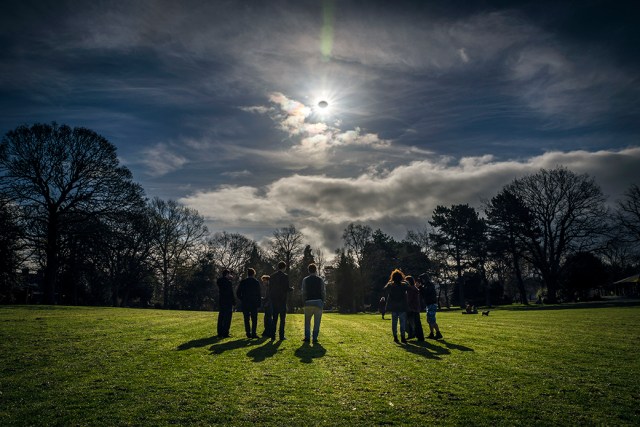
Five Tips from NASA for Photographing a Total Solar Eclipse
- Search All NASA Missions
- A to Z List of Missions
- Upcoming Launches and Landings
- Spaceships and Rockets
- Communicating with Missions
- James Webb Space Telescope
- Hubble Space Telescope
- Why Go to Space
- Astronauts Home
- Commercial Space
- Destinations
- Living in Space
- Explore Earth Science
- Earth, Our Planet
- Earth Science in Action
- Earth Multimedia
- Earth Science Researchers
- Pluto & Dwarf Planets
- Asteroids, Comets & Meteors
- The Kuiper Belt
- The Oort Cloud
- Skywatching
- The Search for Life in the Universe
- Black Holes
- The Big Bang
- Dark Energy & Dark Matter
- Earth Science
- Planetary Science
- Astrophysics & Space Science
- The Sun & Heliophysics
- Biological & Physical Sciences
- Lunar Science
- Citizen Science
- Astromaterials
- Aeronautics Research
- Human Space Travel Research
- Science in the Air
- NASA Aircraft
- Flight Innovation
- Supersonic Flight
- Air Traffic Solutions
- Green Aviation Tech
- Drones & You
- Technology Transfer & Spinoffs
- Space Travel Technology
- Technology Living in Space
- Manufacturing and Materials
- Science Instruments
- For Kids and Students
- For Educators
- For Colleges and Universities
- For Professionals
- Science for Everyone
- Requests for Exhibits, Artifacts, or Speakers
- STEM Engagement at NASA
- NASA's Impacts
- Centers and Facilities
- Directorates
- Organizations
- People of NASA
- Internships
- Our History
- Doing Business with NASA
- Get Involved
- Aeronáutica
- Ciencias Terrestres
- Sistema Solar
- All NASA News
- Video Series on NASA+
- Newsletters
- Social Media
- Media Resources
- Upcoming Launches & Landings
- Virtual Events
- Sounds and Ringtones
- Interactives
- STEM Multimedia
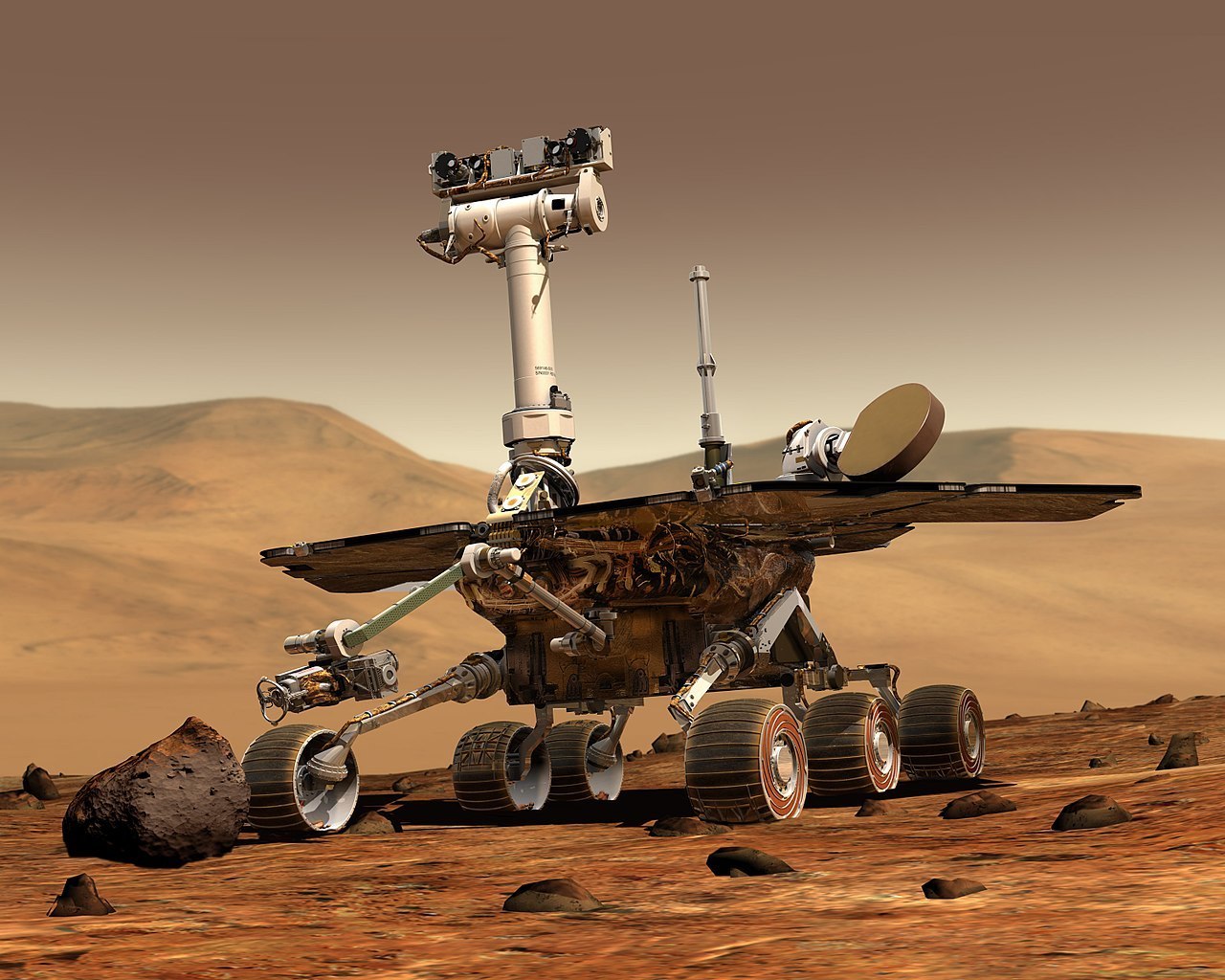
Mars Exploration Rovers: Spirit and Opportunity
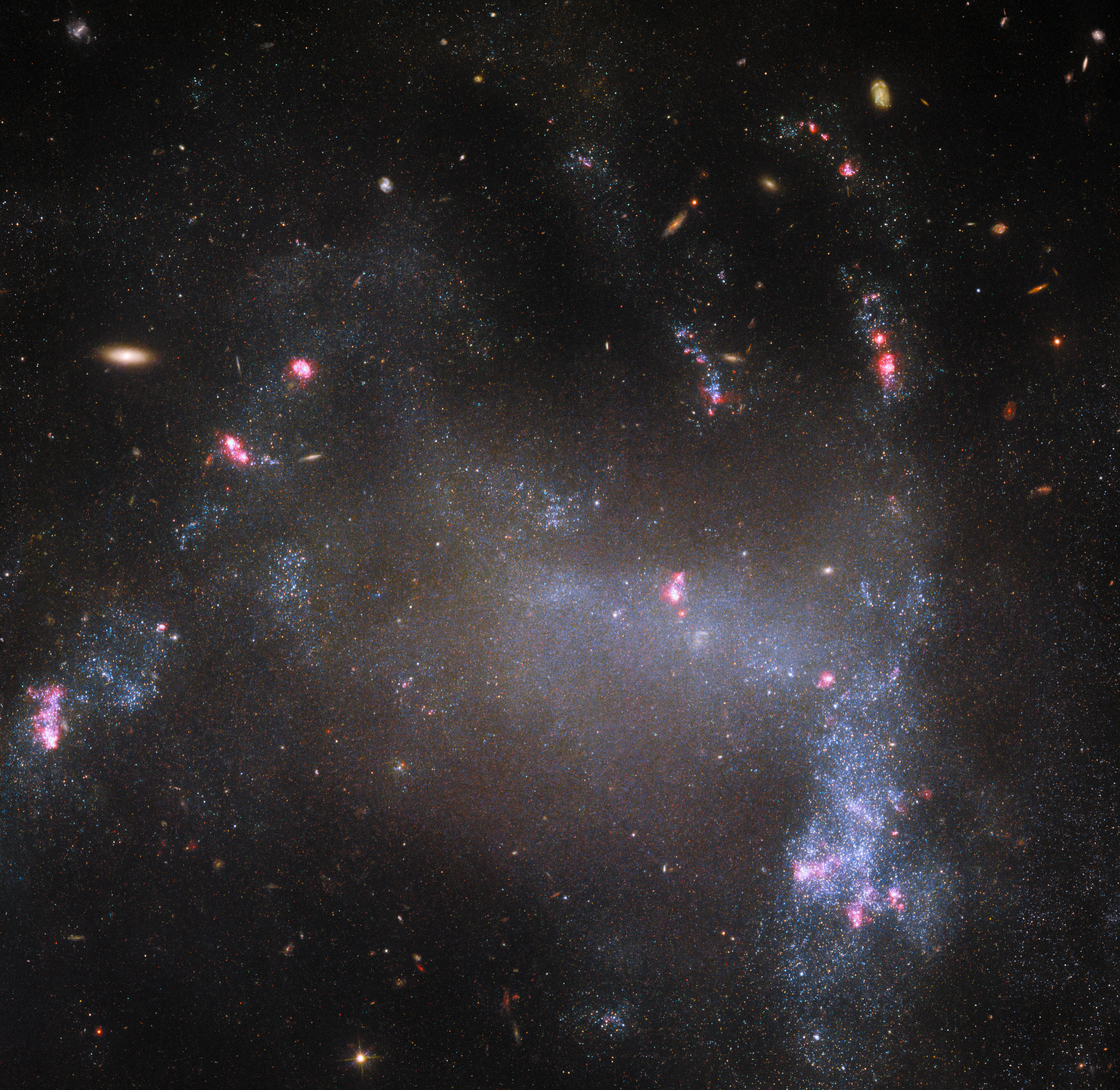
Hubble Spots the Spider Galaxy
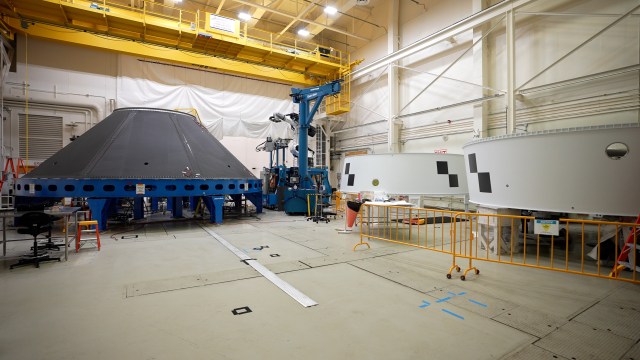
Payload Adapter Testing: A Key Step for Artemis IV Rocket’s Success
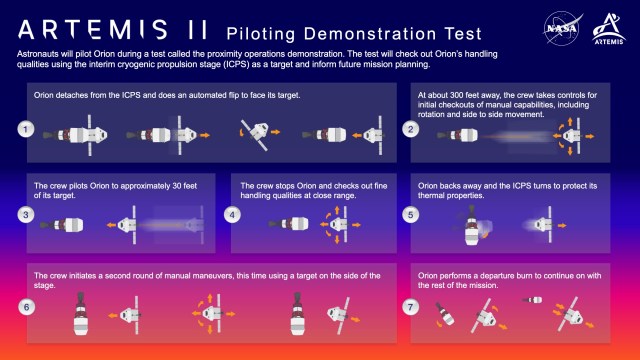
Key Test Drive of Orion on NASA’s Artemis II to Aid Future Missions


NASA Sees Progress on Blue Origin’s Orbital Reef Life Support System

NASA Analysis Sees Spike in 2023 Global Sea Level Due to El Niño
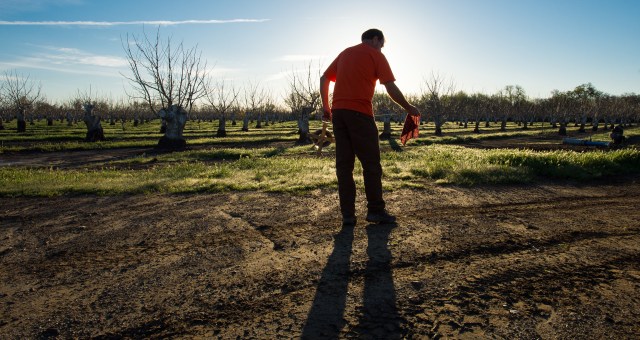
US, Germany Partnering on Mission to Track Earth’s Water Movement

Climate Change Multimedia

Sketch the Shape of the Sun for Science During the Solar Eclipse
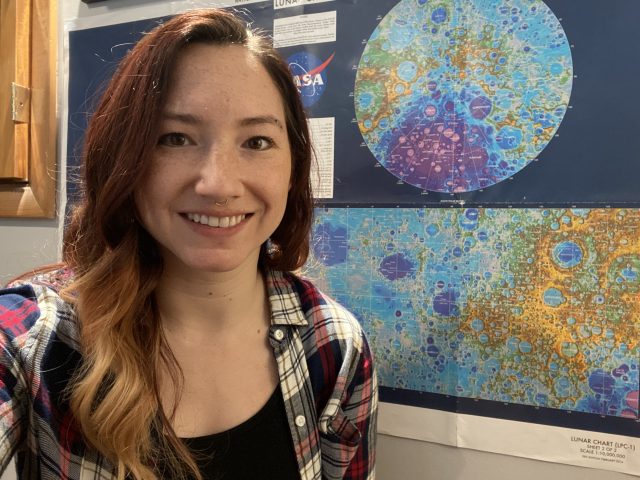
Casey Honniball: Finding Her Space in Lunar Science

NASA’s Tiny BurstCube Mission Launches to Study Cosmic Blasts
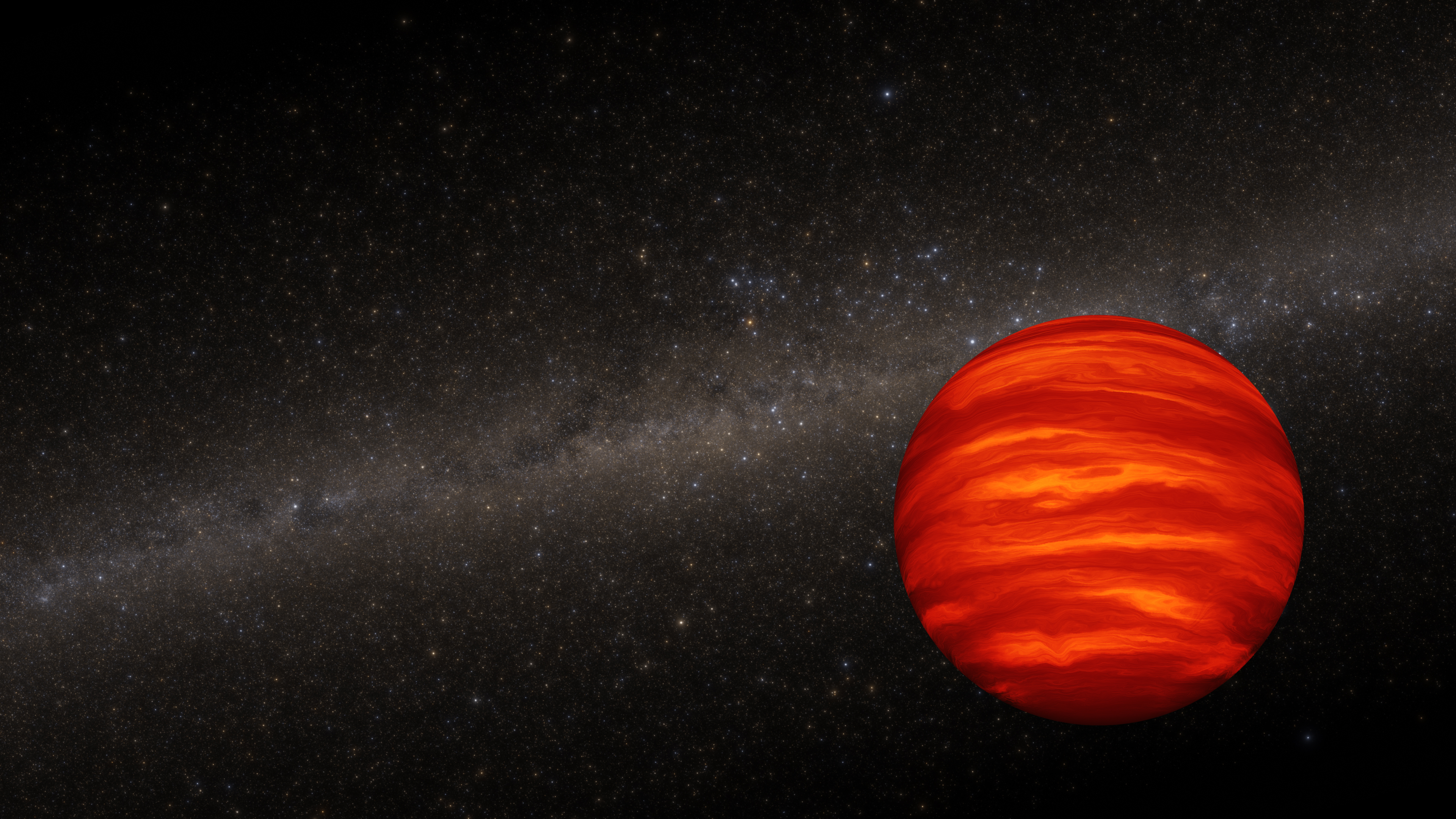
NASA’s Hubble Finds that Aging Brown Dwarfs Grow Lonely
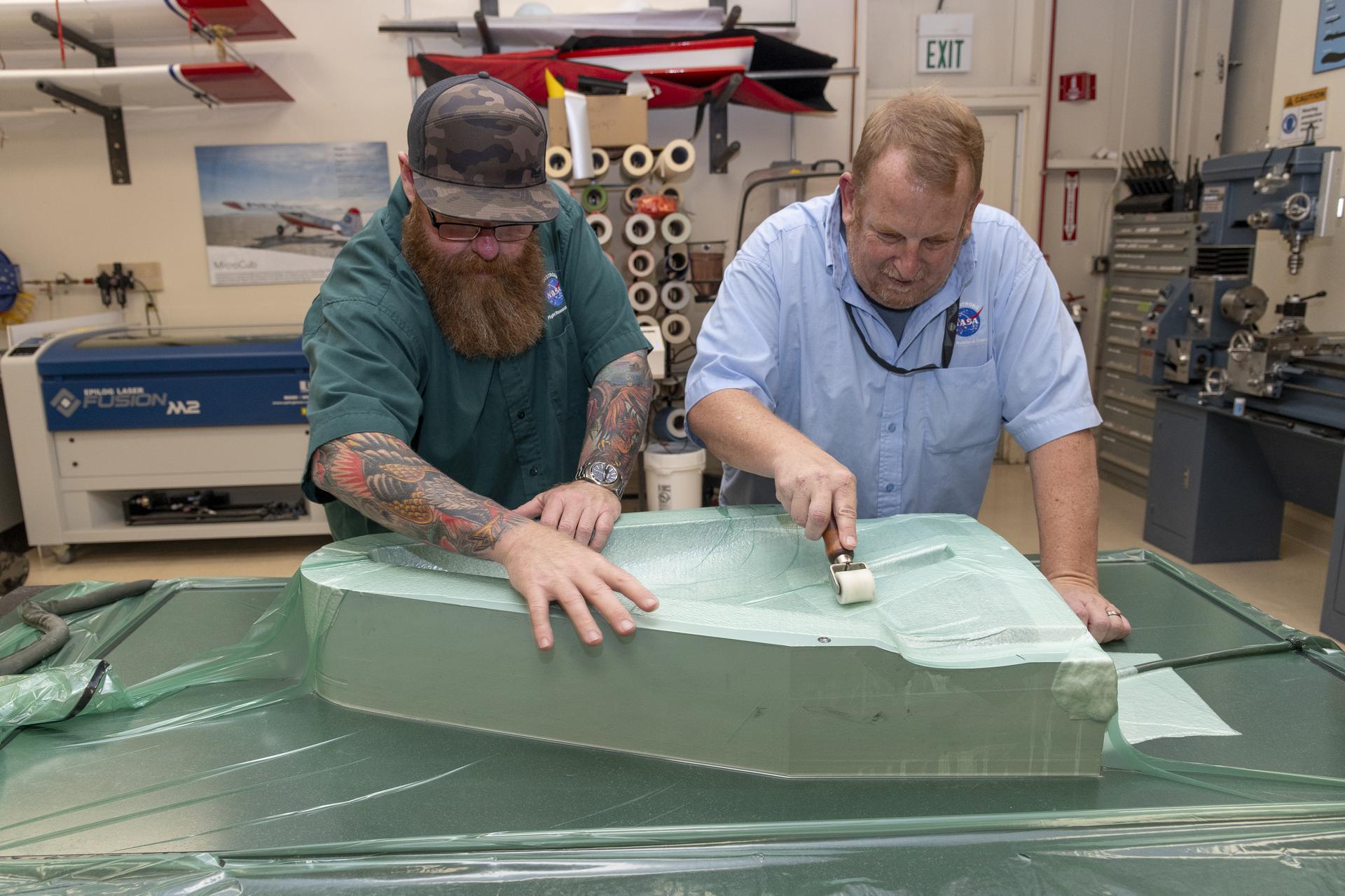
NASA Armstrong Updates 1960s Concept to Study Giant Planets

ARMD Solicitations

2024 Dream with Us Design Challenge
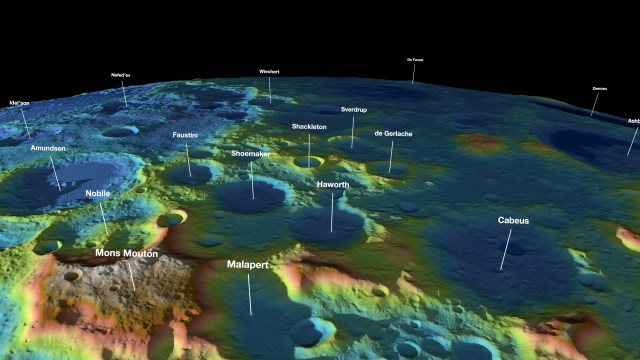
NASA, Industry Improve Lidars for Exploration, Science
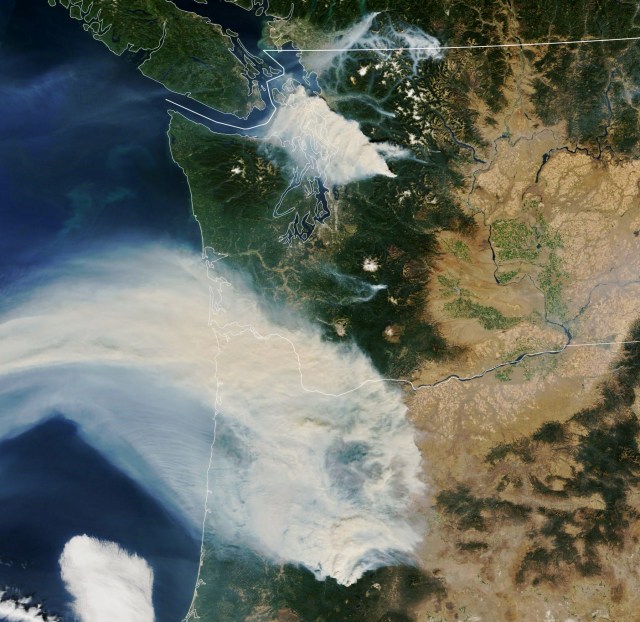
Tech Today: NASA Helps Find Where the Wildfires Are

NASA Announces Semifinalists of Power to Explore Challenge
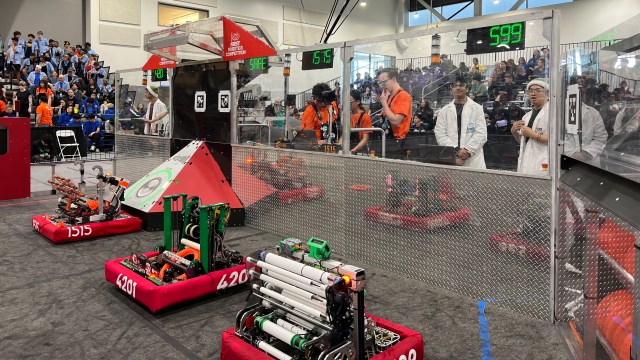
Student-Built Robots Clash at Competition Supported by NASA-JPL
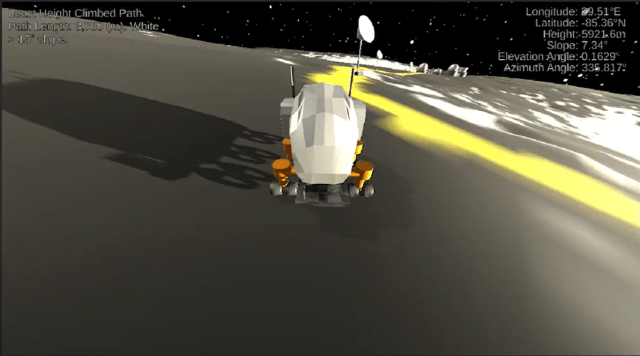
NASA Challenge Invites Artemis Generation Coders to Johnson Space Center
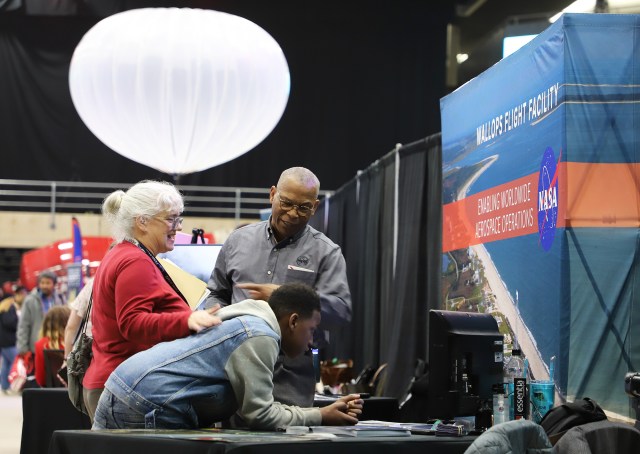
NASA Wallops Offers Career Inspiration to Delmarva Students
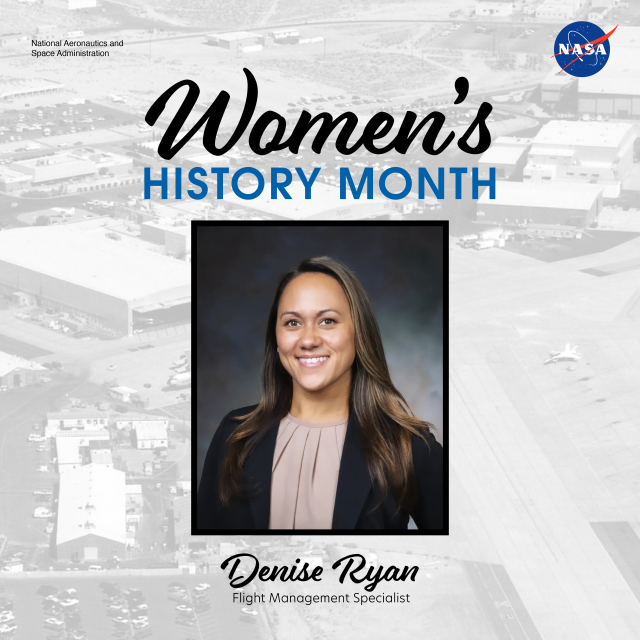
Women’s History Month: Meet Denise Ryan

NASA Innovation on Display at AAS Goddard Space Science Symposium
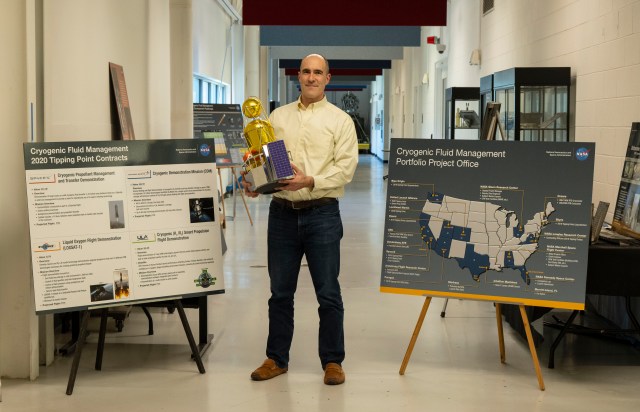
Shuttle, Family Inspire NASA’s Cryogenic Technology Manager

Astronauta de la NASA Marcos Berríos

Resultados científicos revolucionarios en la estación espacial de 2023
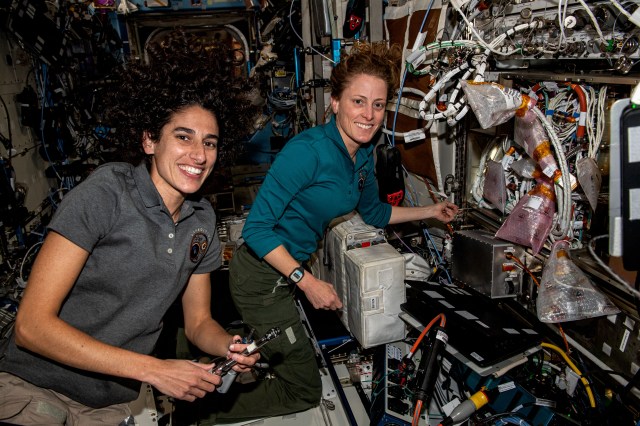
Logros de la NASA en la estación espacial en 2023
Mara johnson-groh.
A total solar eclipse creates stunning celestial views for people within the path of the Moon’s shadow. This astronomical event is a unique opportunity for scientists to study the Sun and its influence on Earth, but it’s also a perfect opportunity to capture unforgettable images. Whether you’re an amateur photographer or a selfie master, try out these tips for photographing the eclipse.
#1 – Safety First
Looking directly at the Sun is dangerous to your eyes and your camera. To take images when the Sun is partially eclipsed, you’ll need to use a special solar filter to protect your camera, just as you’ll need a pair of solar viewing glasses (also called eclipse glasses) to protect your eyes. However, at totality, when the Moon completely blocks the Sun, make sure to remove the filter so you can see the Sun’s outer atmosphere – the corona.
#2 – Any Camera Is a Good Camera
Taking a stunning photo has more to do with the photographer than the camera. Whether you have a high-end DLSR or a camera phone, you can take great photos during the eclipse; after all, the best piece of equipment you can have is a good eye and a vision for the image you want to create. If you don’t have a telephoto zoom lens, focus on taking landscape shots and capture the changing environment.
Having a few other pieces of equipment can also come in handy during the eclipse. Using a tripod can help you stabilize the camera and avoid taking blurry images when there is low lighting. Additionally, using a delayed shutter release timer will allow you to snap shots without jiggling the camera.
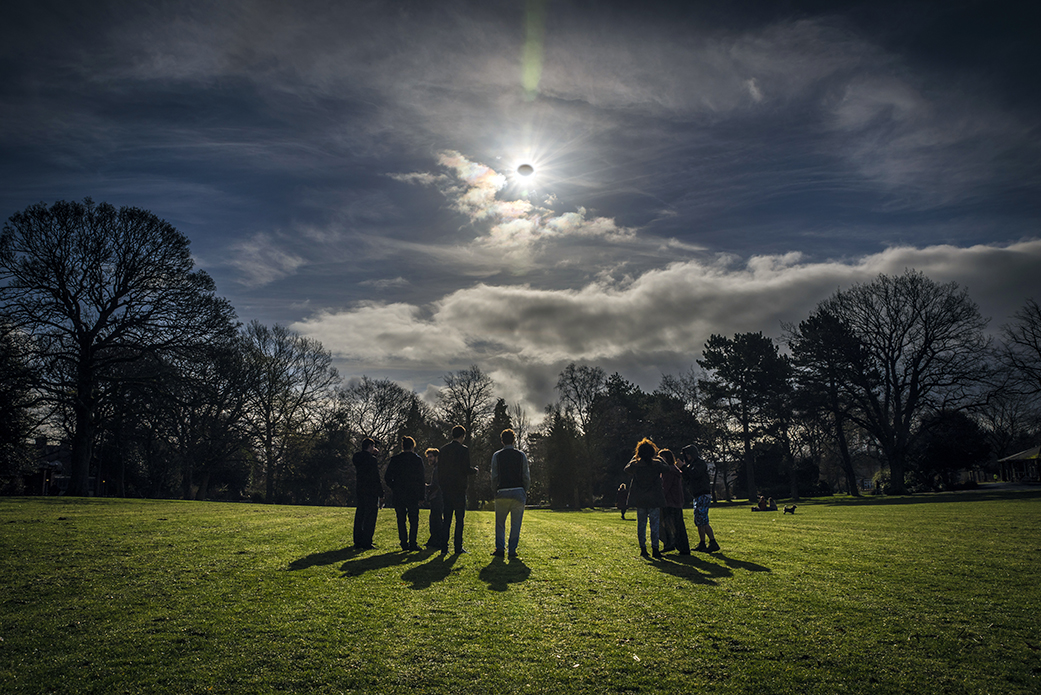
#3 – Look Up, Down, All Around
While the Sun is the most commanding element of a solar eclipse, remember to look around you. As the Moon slips in front of the Sun, the landscape will be bathed in eerie lighting and shadows. As light filters through the overlapping leaves of trees, it creates natural pinholes that project miniature eclipse replicas on the ground. Anywhere you can point your camera can yield exceptional imagery, so be sure to compose some wide-angle photos that can capture your eclipse experience.
NASA photographer Bill Ingalls recommends focusing on the human experience of watching the eclipse. “The real pictures are going to be of the people around you pointing, gawking, and watching it,” Ingalls noted. “Those are going to be some great moments to capture to show the emotion of the whole thing.”
#4 – Practice
Be sure you know the capabilities of your camera before eclipse day. Most cameras, and even some camera phones, have adjustable exposures, which can help you darken or lighten your image during the tricky eclipse lighting. Make sure you know how to manually focus the camera for crisp shots.
For DSLR cameras, the best way to determine the correct exposure is to test settings on the uneclipsed Sun beforehand. Using a fixed aperture of f/8 to f/16, try shutter speeds between 1/1000 to 1/4 second to find the optimal setting, which you can then use to take images during the partial stages of the eclipse. During totality, the corona has a wide range of brightness, so it’s best to use a fixed aperture and a range of exposures from approximately 1/1000 to 1 second.
#5 – Share!
Share your eclipse experience with friends and family afterwards. Tag @NASA to connect your photos on social media to those taken around the country and share them with NASA.
While you’re snapping those eclipse photos, don’t forget to stop and look at the eclipse with your own eyes. Just remember to wear your solar viewing glasses (also called eclipse glasses) for all stages of the eclipse before and after totality!
Related Links
- Learn more about the 2024 total solar eclipse
- Eclipse Photographers Will Help Study Sun During Its Disappearing Act
By Mara Johnson-Groh NASA’s Goddard Space Flight Center , Greenbelt, Md.
Related Terms
- Science & Research
- 2017 Solar Eclipse
- 2024 Solar Eclipse
- Heliophysics
- Heliophysics Division
- Science Mission Directorate
- Solar Eclipses
Explore More

NASA is sending several biological and physical sciences experiments and equipment aboard SpaceX’s 30th commercial…

This image from the NASA/ESA Hubble Space Telescope shows the gauzy-looking celestial body UGC 5829,…

NASA’s BurstCube, a shoebox-sized satellite designed to study the universe’s most powerful explosions, is on…
Discover Related Topics

Solar System

Advertisement
Cannabis vaping liquids contain lead and other toxic metals
The heating elements in vapes can release toxic metals. Now an analysis of cannabis vaping liquids shows metals like lead are present at dangerous levels – even before the vape is used
By Jocelyn Solis-Moreira
19 March 2024

Cannabis vape pens can contain unsafe levels of heavy metals
Richard Vogel/AP/ Alamy
Cannabis vape liquids contain toxic heavy metals that do not come from the device itself. In both legal and illegal products, the concentration of nano-sized metal particles exceeds the safe limits for metal intake.
Vaping is touted as a healthier alternative to smoking because heating a drug into an inhalable vapour, rather than burning it, releases lower levels of toxic chemicals. However, vaping liquid does contain other dangerous additives such as benzene, a carcinogen also found in car exhaust. Research …
Sign up to our weekly newsletter
Receive a weekly dose of discovery in your inbox! We'll also keep you up to date with New Scientist events and special offers.
To continue reading, subscribe today with our introductory offers
No commitment, cancel anytime*
Offer ends 2nd of July 2024.
*Cancel anytime within 14 days of payment to receive a refund on unserved issues.
Inclusive of applicable taxes (VAT)
Existing subscribers
More from New Scientist
Explore the latest news, articles and features
Ozempic and Wegovy linked to a lower risk of cannabis use disorder
Subscriber-only
Why does the UK want to ban disposable vapes and when will it happen?
Inside the secretive cannabis lab that makes futuristic weed, everything you need to know about the way cannabis affects your brain, popular articles.
Trending New Scientist articles
Facility for Rare Isotope Beams
At michigan state university, frib project team receives secretary of energy’s achievement award.
The FRIB Project team received a U.S. Department of Energy’s (DOE) Secretary of Energy Achievement Award—DOE’s highest form of employee recognition for achievements—at the annual Secretary’s Honor Awards ceremony held 20 February. The event included an address from U.S. Secretary of Energy Jennifer M. Granholm and award presentations from Deputy Secretary David M. Turk.
The Secretary’s Honor Awards are given every year to individuals and teams whose service has gone above and beyond expectations and for contributions having lasting impacts on both DOE and the United States. These awards are among the highest forms of internal, non-monetary recognition DOE federal and contractor employees can receive. The DOE Office of Science nominated the FRIB Project team for the award.
“I would like to recognize the Facility for Rare Isotope Beams—FRIB—for their exceptional project planning skills, discipline in project management, and resilience in the face of unforeseen challenges to successfully complete the 14-year construction of FRIB—on cost and ahead of schedule,” said Under Secretary for Science and Innovation Geri Richmond. “FRIB was designed to be the most powerful heavy ion accelerator in the world for the production of short-lived nuclei. Its construction allows for 85 percent of all isotopes predicted to exist in nature to be accessed, more than 2.5 times the number of isotopes previously even known. This new Office of Science user facility has an interactive user community of over 1,800 scientists, and the successful construction of FRIB opens new research and technical horizons, significantly advancing multiple DOE missions and underpinning the future science and technology leadership, security, and competitiveness of the United States.”
FRIB, which began construction in May 2009, was completed in January 2022 and officially opened in May 2022.
“We are honored to receive this meaningful recognition, and grateful for the continued support of the U.S. government and the American taxpayers to operate FRIB in service to the nation,” said FRIB Laboratory Director Thomas Glasmacher. “This award truly is for the entire FRIB Project team, without whom there would be no FRIB, which we are privileged to operate as a U.S. Department of Energy Office of Science user facility, enabling scientists to make discoveries.”
FRIB Laboratory Director Thomas Glasmacher, former Project Manager and Deputy Laboratory Director Paul Mantica, former Scientific Director Brad Sherrill, Experimental Systems Director Georg Bollen, and Accelerator Systems Division Director Jie Wei accepted the award on behalf of the FRIB Project team.
Michigan State University operates FRIB as a user facility for the DOE Office of Science (DOE-SC), supporting the mission of the DOE-SC Office of Nuclear Physics. Hosting what is designed to be the most powerful heavy-ion accelerator, FRIB enables scientists to make discoveries about the properties of rare isotopes (that is, short-lived nuclei not normally found on Earth), nuclear astrophysics, fundamental interactions, and applications for society, including in medicine, homeland security, and industry.
CHAMPAIGN-URBANA: Budzinski Announces $7.5 Million for Environmental Research at the University of Illinois
WASHINGTON, D.C. — Today, Congresswoman Nikki Budzinski (IL-13) announced that the University of Illinois Urbana-Champaign has been awarded $7.5 million in federal grant funding for the study of permafrost using new technology. These funds are awarded through the Department of Defense’s Multidisciplinary University Research Initiative (MURI).
“As one of the nation’s leading research institutions, the University of Illinois continues to secure immense federal support for groundbreaking research projects,” said Congresswoman Budzinski. “I’m excited to announce that my alma mater will be receiving $7.5 million in federal funding from the Department of Defense. This project will bring experts from a variety of fields together to help us gain more insight into our global climate.”
The project, called Interdisciplinary Material Science for the Hyperspectral Remote Sensing of Permafrost (IM SHARP), will study permafrost properties through newly developed experimental tools including remote sensing, light polarization and electromagnetic theory. The University team will explore the various physical and chemical properties of permafrost under current and changing environmental conditions and will have implications for global climate research.
The Department of Defense’s Multidisciplinary University Research Initiative (MURI) program involves teams of researchers investigating high priority topics and opportunities that intersect more than one traditional technical discipline. For many military problems, this multidisciplinary approach serves to stimulate innovations, accelerate research progress and expedite transition of results into naval applications.
Recent Posts
Budzinski helps pass border security resources in second bipartisan government funding bill.
WASHINGTON, D.C. — Today, Congresswoman Nikki Budzinski (IL-13) voted to pass a second bipartisan government funding bill that includes desperately needed resources to secure the southern border. The bill provides robust funding for technology and personnel to combat the deadly fentanyl epidemic and a record funding increase for the U.S. Border Patrol. Budzinski continues to […]
Budzinski, Durbin, Duckworth Demand Answers from Postmaster General on Plans to Reduce Operations in Champaign and Springfield
WASHINGTON, D.C. — Today, Congresswoman Nikki Budzinski (IL-13), Senators Dick Durbin and Tammy Duckworth andRepresentatives Mike Quigley (IL-05) and Eric Sorensen (IL-17) sent a letter to Postmaster General Louis DeJoy urging him to reconsider his decision to eliminate mail processing at Processing and Distribution Centers (P&DCs) located in Champaign, Springfield, Peoria, and Milan, Illinois. In their letter, the lawmakers noted that any move to […]
Budzinski, Miller Push USPS to Maintain Current Operations at Springfield Mail Processing and Distribution Center
WASHINGTON, D.C. — Today, U.S. Representatives Nikki Budzinski (IL-13) and Mary Miller (IL-15) sent a letter to Postmaster Louis DeJoy raising serious concerns about the U.S. Postal Service’s (USPS) plan to downsize the Springfield, Illinois Processing and Distribution Center. The plan could mean worse delivery rates and the relocation of dozens of jobs to the St. Louis area. Budzinski encourages local residents […]

IMAGES
VIDEO
COMMENTS
The Research Scientist 5 will lead the Division efforts to develop data management practices that follow Federal and State regulations, policies and practices related to personally identifiable data collection, analysis, storage, usage, and dissemination. The incumbent will explore and identify high impact research based on the agency strategic ...
The Research Scientist 5 identifies and explores high impact research areas in relation to an agency's programs, needs, and the state of science involved. Projects result in a series of publishable contributions that answer important questions in a scientific field, account for previously unexplained phenomena, and open significant new ...
Duties Description "The Research Scientist 5, G31 will act as the Director of the Data Management, Analysis & Research Group in the Office of Primary Care & Health Systems Management (OPCHSM). The Director is responsible for oversight of all functions of DMAR, including supervision of the unit, in addition to working directly with OPCHSM Executive and Center Directors to provide subject matter ...
If you are applying for more than one posting, you must submit a separate resume or Employment Application for each control number. Send to: Department of Environmental Conservation. 625 Broadway. Albany, New York 12233-5060. Fax: (518) 402-9038. E-Mail: [email protected].
Research Scientist 5 Analytical Chemistry - 11421. Health, Department of. Albany, NY 12237. $123,721 - $150,612 a year. Full-time. The incumbent will assume scientific leadership of the Asbestos Laboratory and develop an independent research program focused on Medical Geology.
The Research Scientist 5 (Epidemiology) will serve as the Director of the Bureau of Tobacco Control. The Director is responsible for implementing effective science-based tobacco control interventions to prevent and reduce tobacco use; effectively invest and manage approximately $39 million in program resources and coordinate program delivery across the state; supervise and mentor approximately ...
Research Scientist 5 (Molecular Biology) - 11417 New York State Department of Health Albany, NY 6 days ago Be among the first 25 applicants
The Wadsworth Center is seeking a Research Scientist 5 at the Associate Professor level to lead the Asbestos Laboratory, and establish a competitive, extramurally funded research program in ...
Research Scientist 5 (Various Specialties) - $9,878.00 - $12,367.00 per month View the Research Scientist 5 (Various Specialties) classification specification APPLICATION INSTRUCTIONS Final Filing Date: Continuous Who Should Apply: Applicants who meet the minimum qualifications as stated on this bulletin may apply for
Minimum Qualifications Non-Competitive: a *qualifying master's degree and six years of professional research experience in an appropriate field. A Ph.D. in an appropriate field may substitute for o…
Assistant Research Scientist/Research Scientist 1 and 2 (Biostatistics, Health Services Research) - 63307. 22. Albany. 3/28/2024. Health Program Administrator or Health Program Administrator Trainee (NY HELPS)- 14027. 18. Albany. 3/28/2024. Research Scientist 3 (Health Services Research) - 63306.
No Current Vacancies for Research Scientist 5. Applications accepted from the general public (including current and past state employees and 55-b/c candidates.) You must meet the minimum qualifications. Research Scientist 5; Category of Information Posting Specific Information; Control Number: Application Due By:
Research. CLASSIFICATION HISTORY. New to UAW: 06-16-2022 per PERC Case No. 134711-E-21. Prior to 06-16-2022, this work was in professional staff job codes 19328 - Research Scientist/Engineer 4 (NE S 9) and 11495 - Research Scientist/Engineer 4 (E S 9).
153799. Assistant Research Scientist/Research Scientist 1/Research Scientist 2 (Biostatistics, Health Services Research) - 63307. 22. 03/14/24. 03/28/24. Health, Department of. Albany. 153784. Assistant Research Scientist/Research Scientist 1/2 (Biostatistics, Health Informatics) - 63315.
5 Steps to Become a Research Scientist. 1. Acquire the necessary technical skills. According to Auclair, there are four main applications of research science within the biotechnology field: Molecular Biology. Process Science. Biochemistry. Analytical Biotechnology.
Research scientists conduct laboratory-based experiments and trials and work in many fields including medicine, political science, computer science, and environmental science. They plan and conduct experiments that become topics of research papers and reports. They collect samples and carry out other types of field research and monitor their ...
5. Apply for research scientist roles Once you've completed your desired degree programs and gained some experience in the industry, you can start searching for research scientist positions. There are many ways to find research scientist positions. here are some tips to consider that can help you find these roles at a university or company:
Obtain a bachelor's degree. Complete a master's degree. Gain experience. Pursue certifications. Consider a doctorate. 1. Obtain a bachelor's degree. Aspiring research scientists should start by pursuing a bachelor's degree that's relevant to the field they're most interested in.
Ravi Chawla, of Murphy, celebrates his retirement from a 9-to-5 job Friday afternoon outside the Summit Business Park Building in McKinney. The full-time research scientist will now focus his time ...
Congress has given the National Institutes of Health (NIH) a 0.6% increase, to $47.1 billion, in a final 2024 spending bill that lawmakers are expected to approve in time to avert a partial government shutdown this weekend. And several policy directives opposed by researchers have been stripped from the legislation.
March 18, 2024. Arizona State University's Luminosity Lab student team was recently selected as a finalist in NASA's Breakthrough, Innovative, and Game-Changing (BIG) Idea Challenge. The group is one of six teams selected by NASA to present at the 2024 BIG Idea Challenge Forum, Nov. 5-7, at NASA Langley Research Center in Hampton, Virginia.
But as the planet warms, storms are increasingly surpassing what was once considered extreme, according to research published Monday.Now, two scientists are proposing a new label they say a ...
Duties Description The Wadsworth Center is seeking a Research Scientist 5 at the Assistant or Associate Professor level to lead the Asbestos Laboratory, and establish a competitive, extramurally funded research program in Medical Geology. The Asbestos Laboratory is a fully accredited laboratory within the Division of Environmental Health Sciences (DEHS) at the Wadsworth Center, where skilled ...
During totality, the corona has a wide range of brightness, so it's best to use a fixed aperture and a range of exposures from approximately 1/1000 to 1 second. #5 - Share! Share your eclipse experience with friends and family afterwards. Tag @NASA to connect your photos on social media to those taken around the country and share them with ...
The heating elements in vapes can release toxic metals. Now an analysis of cannabis vaping liquids shows metals like lead are present at dangerous levels - even before the vape is used
Assistant Research Scientist/Research Scientist 1/2 (Biostatistics, Health Informatics) - 63315: 22: Albany: 3/28/2024: Program Research Specialist 2 HCF (NY HELPS) - 63014: 23: Albany: 3/28/2024: Business Systems Analyst 1 (Health) (NY HELPS) 18: Albany: 3/28/2024: Assistant Research Scientist/Research Scientist 1 and 2 (Biostatistics, Health ...
This new Office of Science user facility has an interactive user community of over 1,800 scientists, and the successful construction of FRIB opens new research and technical horizons, significantly advancing multiple DOE missions and underpinning the future science and technology leadership, security, and competitiveness of the United States ...
Review Vacancy. Agency Mental Health, Office of. Title Research Scientist 5 , Central Office; Occupational Category Other Professional Careers. Bargaining Unit PS&T - Professional, Scientific, and Technical (PEF) Salary Range From $110970 to $135089 Annually. Appointment Type Contingent Permanent. Jurisdictional Class Non-competitive Class.
WASHINGTON, D.C. — Today, Congresswoman Nikki Budzinski (IL-13) announced that the University of Illinois Urbana-Champaign has been awarded $7.5 million in federal grant funding for the study of permafrost using new technology. These funds are awarded through the Department of Defense's Multidisciplinary University Research Initiative (MURI). "As one of the nation's leading research ...
Duties Description The Research Scientist 5 (Epidemiology) will serve as the Director of the Bureau of Tobacco Control. The Director is responsible for implementing effective science-based tobacco control interventions to prevent and reduce tobacco use; effectively invest and manage approximately $39 million in program resources and coordinate program delivery across the state; supervise and ...